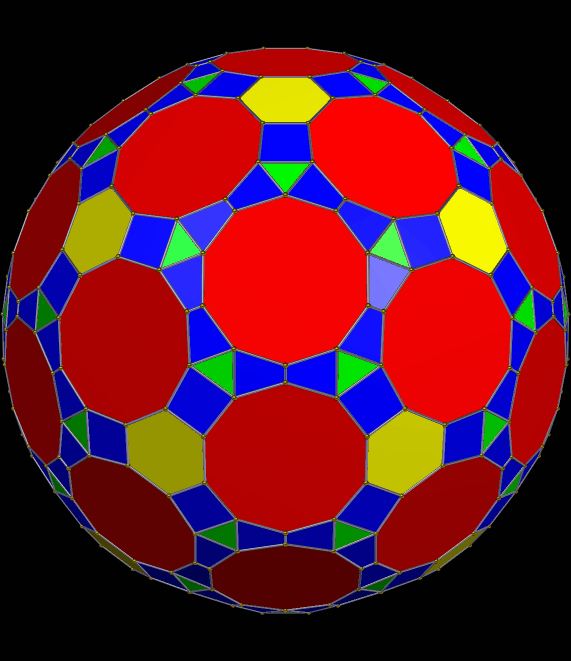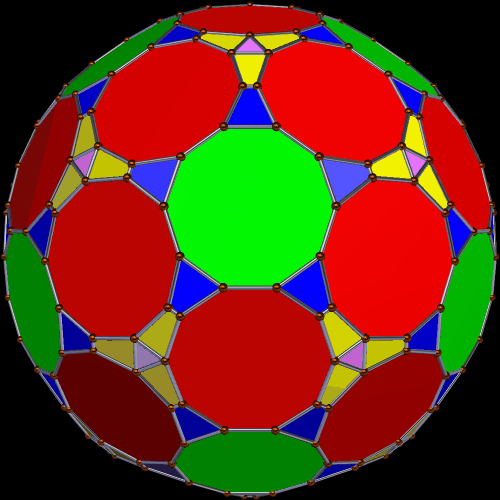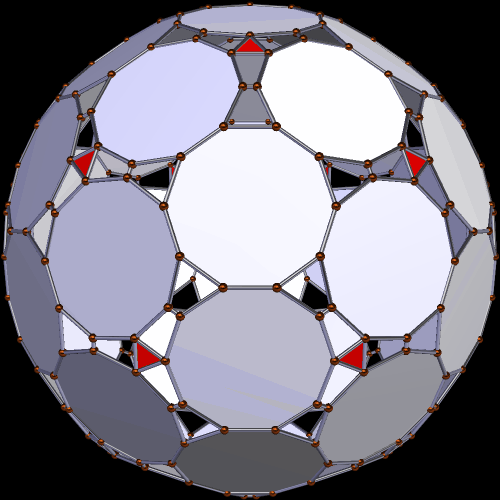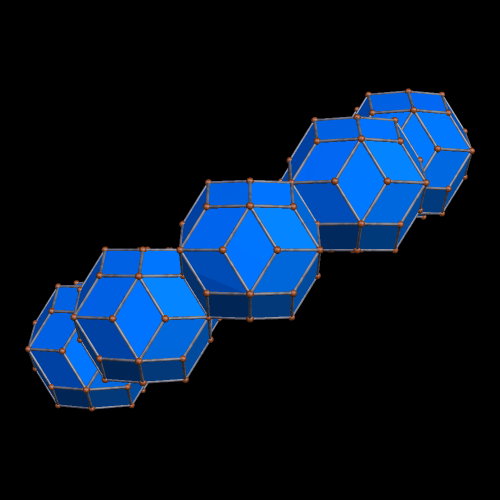The first polyhedron shown here is also a symmetrohedron. 42 of its faces are regular decagons, and twenty are equilateral triangles. There are also sixty each of two types of isosceles trapezoids. That’s 182 faces in all.
The second polyhedron shown, below, also has 42 regular decagons as faces, along with twenty equiangular hexagons, sixty isosceles triangles, sixty almost-square isosceles trapezoids, and 120 of another kind of isosceles trapezoid. That’s a total of 302 faces.
The third one I found, shown below, has 42 decagons, sixty convex hexagons, twenty equilateral triangles, sixty rectangles, and sixty isosceles trapezoids, for a total of 242 faces.
I made all three of these polyhedra using Stella 4d: Polyhedron Navigator, which you can try for yourself, free, at http://www.software3d.com/Stella.php.














